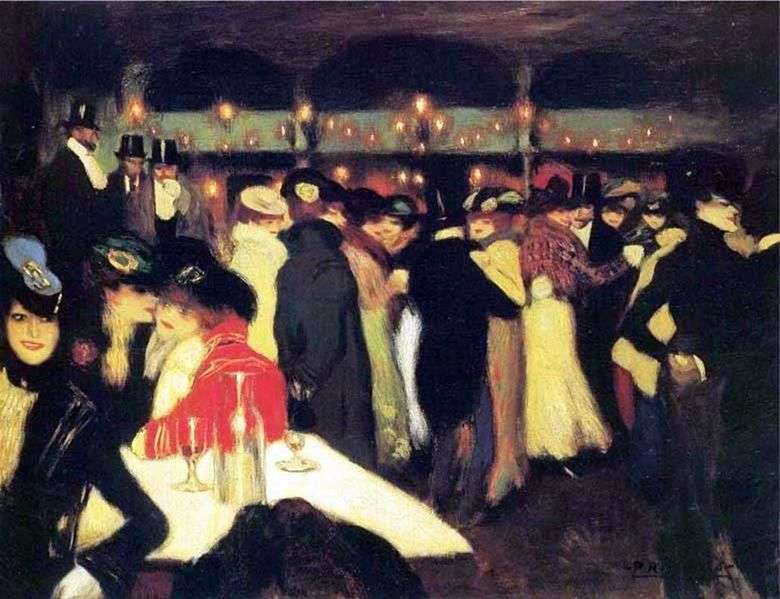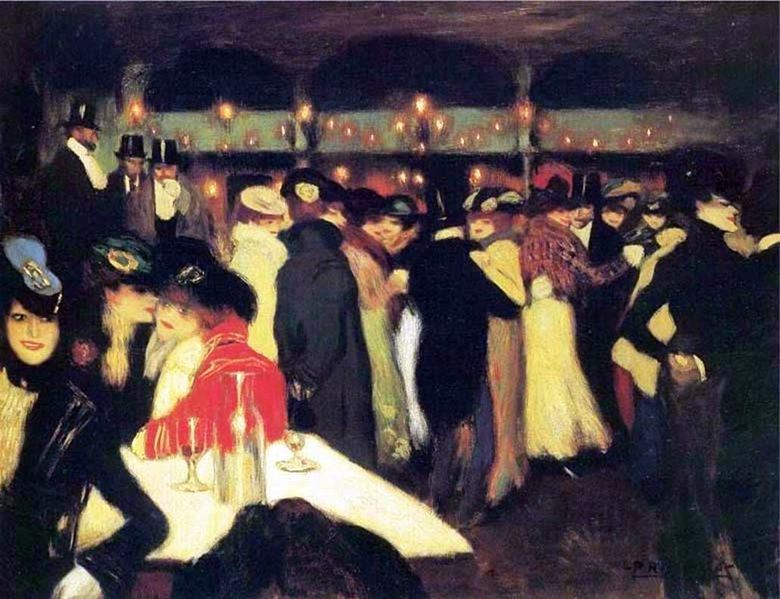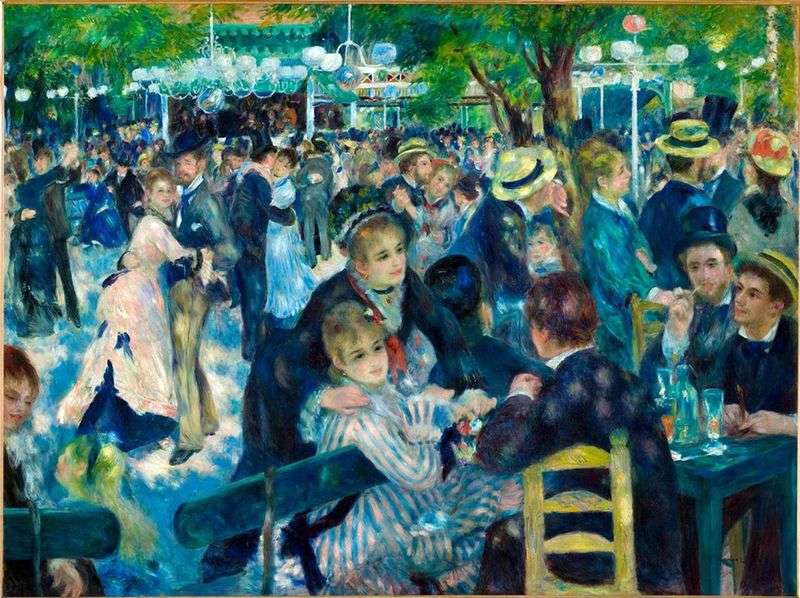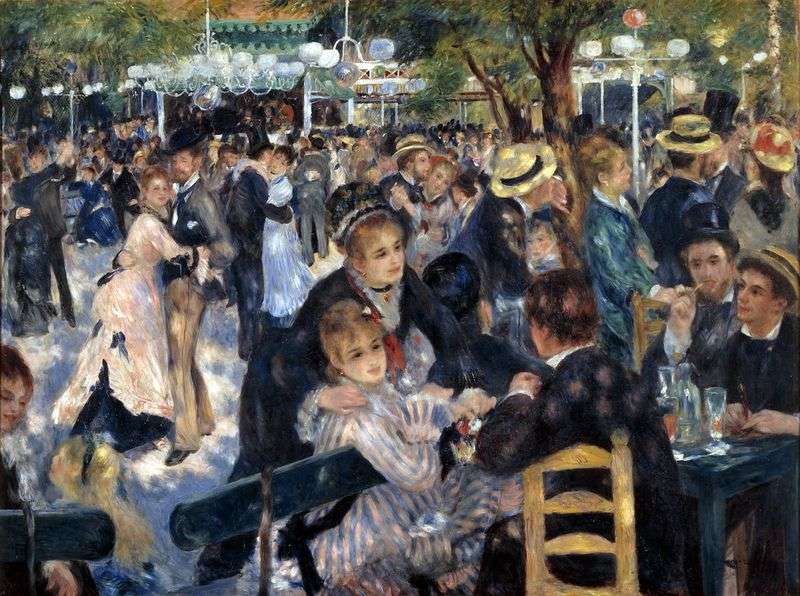
A significant picture for Picasso’s early work about a significant place for the whole bohemian society of Paris is what the Moudon de la Galette impressionistic canvas is.
The famous dance hall with a cafe grew up in Montmartre instead of windmills, which no longer generate income. The wooden barn where the owner built the workers and seamstresses were going to dance after a long working day, built first by his modesty and even wretchedness. Gradually, the circle of people expanded, as well as the quality of this institution, and representatives of the creative bohemian began to come here. The Moulin de la Galette regulars were Vincent Van Gogh, Renoir, Corot, and the guests of honor, attracting even more visitors, were the charismatic shorty Toulouse-Lautrec in the society of the beautiful La Goulou.
The young ambitious Picasso at the age of 19 arrived in Paris at the World Exhibition, where the Eiffel Tower, which became the symbol of the main city of France, was first introduced. Actively seeking to enter the bohemian society of artists, it is not surprising that Picasso found himself in a cabaret, where the greatest artists of his time disappeared.
Relaxedness, freedom of manners were consonant with young Pablo with new traditions of the impressionists, who proclaimed their freedom of creativity, free from the eves of classical artifacts. That is why impressionism becomes the leading style for Picasso for some time, as a taste for creative freedom, which will then result in surrealism and analytic cubism, which is completely unprecedented and unthinkable for artistic art.
Picasso’s painting is performed using the main techniques of the Impressionists – a virtuoso play of light and shadow. It is as if the figures of dancing people, embodied in bright contrasting colors, come out of the darkness. The whole work space is permeated with reflections and it is with the help of these flashes that the whole space is illuminated – the bright light of the lanterns plays on the brilliant fabrics of the ladies’ dresses and the black cylinders of the gentlemen.
The picture does not give an idea of the spatial situation of the famous cabaret, rather it is a frame-mood, eloquently conveying the spirit and atmosphere – flirty looks, white-toothed smiles, rustling of fluffy skirts, wide ladies’ hats, dancing couples in the light of bright lights.
Picasso’s picture is sometimes compared with some scaffolding on which a scene is played, so characteristic of the bohemian Paris of those times. We can not agree with this!
 Moulin de la Galette – Pablo Picasso
Moulin de la Galette – Pablo Picasso Moulin de la Galette – Pablo Picasso
Moulin de la Galette – Pablo Picasso Family of Comedians by Pablo Picasso
Family of Comedians by Pablo Picasso Dance by Pablo Picasso
Dance by Pablo Picasso Dancing in Moulin de la Galette by Pierre Auguste Renoir
Dancing in Moulin de la Galette by Pierre Auguste Renoir Ball in Moulin de la Galette by Pierre Auguste Renoir
Ball in Moulin de la Galette by Pierre Auguste Renoir Boy with a pipe by Pablo Picasso
Boy with a pipe by Pablo Picasso